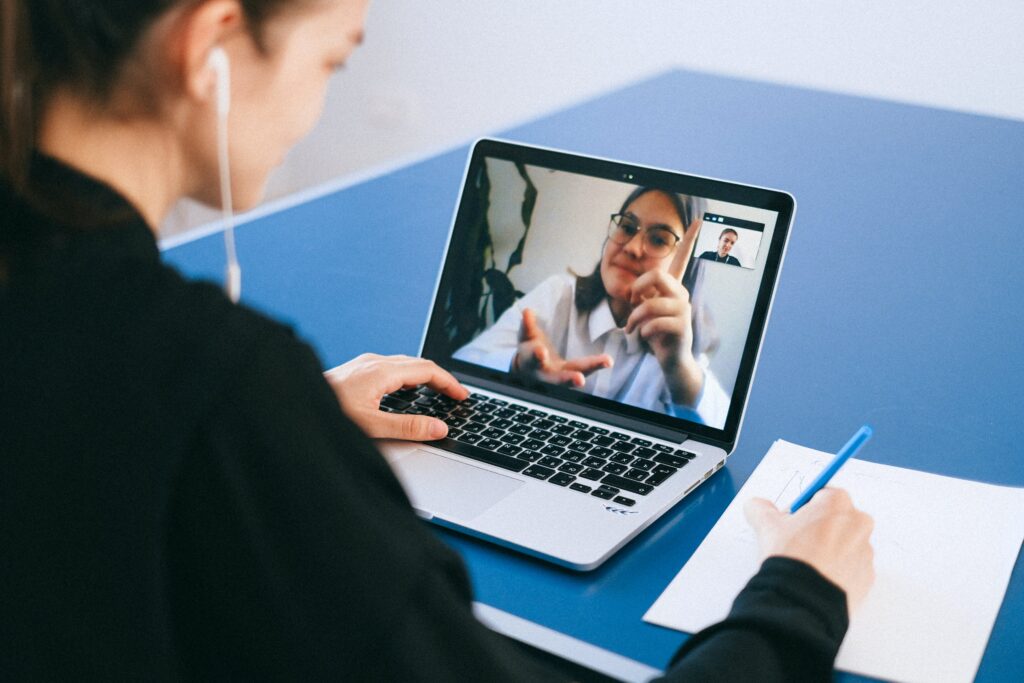How to learn faster and remember everything (This skill made my first 100K)

Learning quickly and efficiently is a game-changer in today’s fast-paced world (come on—with ChatGPT, Genomics, Virtual Reality, Computing Power, 3D Printing today—what’s tomorrow, right?) Whether you’re an online coach, an e-commerce guru, entrepreneur or side hustler—this skill applies to you too.
That’s right: ingesting, retaining, and recalling information isn’t just for kids at the spelling bee anymore! It’s time to step up your recall game.
My path to improving my memory
If you’re like me, then there was (and maybe still is) a point in your life where you were basically addicted to getting all the information you could. E-books, webinars, podcast interview conversations, digital courses, tutorial videos, audio books—I couldn’t get enough.
Sometimes, though, I felt like I was only keeping in about 10% of what I was reading. The rest just slipped out of my brain.
It was frustrating. Plus, I always admired people who were able to seemingly memorize anything they wanted, automatically. I guess I just wasn’t born with that kind of memory, right?
Wrong. Turns out, it’s not a talent. It’s a skill. (Except those who have a photographic memory ;)) One that just about anyone can learn, given the motivation!
And if you aren’t exactly motivated, then let me tell you: developing my ability to learn fast and remember everything played a huge role in earning my first 100k through online business.
How’s that for motivation?
How to learn faster
(without being born with a photographic memory!)
I was listening to a podcast one day that mentioned a contest where people compete to memorize the order of a shuffled deck of cards the fastest. Plenty of them can do it in under 30 seconds.
As the podcast hosts explained, these aren’t just super-geniuses born with incredible memories. They use skills and techniques like mnemonics and visualization to lock the information into their brains with extreme efficiency.
Once I heard that, I knew the people I’d admired for their amazing recall must (whether they realize it or not) be using techniques like that.
I made it my goal to learn more and figure out how I could apply these skills to my own life—and leverage them to build my business better, faster, and stronger.
Through my research, I found the five best techniques I’ve found to drastically improve your memory.
I called this AMSVP technique. Without further ado:
1. Active Learning (a.k.a Brain Gymnastics)
The first technique is something you may already be doing (but could be doing more). Called active learning, it involves engaging with the material, rather than simply sitting and listening. It can involve:
- Taking notes
- Teaching the subject to someone else (Feynman Technique)
- Summarizing the material
- Solving problems related to the material
Active learning works because it creates neural connections in your brain in different areas. When you’ve got more places in your brain where the info is stored, the chances are better that most of it sticks.
For example, imagine you have a friend who’s also interested in starting a small business, but struggles with understanding financial statements. Using active learning, you take on the role of a mentor and walk them through what you’ve learned.
Break down complex financial terms into simpler ones, use relatable exams, and do what you can to construct a business from scratch—think like in business class in high school! Even create dummy balance sheets for better understanding.
As you teach, you’ll find yourself gaining a more nuanced understanding of the topic.
2. Mnemonics (a.k.a Mental Stick Notes)
A mnemonic is a memory aid that helps you remember by associating the subject with something else. Remember “PEMDAS” from math class, or “Please Excuse My Dear Aunt Sally”?
Acronyms, rhymes, and songs can be extremely useful to quickly memorize chunks of information that include more than the 6 or 7 things one can typically hold in their active memory.
While mnemonics aren’t quite as useful for memorizing long and complex topics, they can seriously help you recall important bits and pieces—especially once you get in the habit of applying them frequently.
Another example, “Every Good Boy Deserves Favour” isn’t just the notes on the treble clef, but also the title of a famous play by Tom Stoppard!
3. Spaced Repetition (a.k.a Deja Review)
Spaced repetition is a learning technique that involves reviewing information at increasingly longer intervals to help you retain the information better.
This means reviewing the information shortly after you first learn it, then reviewing it again a few days later, then a week later, and so on. By spacing out your reviews, you are strengthening the connections in your brain and helping the information stick in your long-term memory.
In other words—don’t just read it once and forget about it! If you need to, take a note as a reminder to revisit material you’ve covered recently.
The only problem with spaced repetition is that, until you’ve honed your memory skills, you may forget to remember things! That’s why using a spaced repetition app like Memorang can be helpful. It’ll remind you of when and what you need to review and learn.
4. Visualization (a.k.a Mind Movies)
Visualization involves creating mental images to help you remember information more easily. For example, if you’re trying to remember a list of items, you could visualize each item as a picture in your mind.
This makes the information more concrete and easier to remember. It’s also a great way to stimulate your creative side while learning.
Remember those card memorization competitions I mentioned earlier? Many competitors use a “hall of cards” technique, where they visualize a familiar location and mentally insert a picture of each card (or a mnemonic stand-in for the card) at specific locations. They then take a mental “walk” through the location to recall the order of cards. It’s also known as the “memory palace” technique, or method of loci.
Storytelling is another powerful aspect of the visualization technique, where you combine facts with a narrative you’ve created. Maybe if you’re really creative, you can combine a narrative with a memory palace? Let me know if it works for you 😎
5. Practice Retrieval (a.k.a Memory Fetch & Catch)
Practice retrieval is the strategy of actively recalling information from memory rather than just reviewing it. Simply put, it’s the habit of testing yourself!
It could include things like taking practice tests, doing quizzes, or actively recalling information during a conversation. By actively retrieving the information from memory, you are strengthening the connections in your brain and making it easier to recall the information in the future.
Renowned computer scientist and co-founder of Udacity, Sebastian Thrun, is a big proponent of practice retrieval. In interviews, he’s stated he regularly tests himself on things he wants to learn, and credits his success in AI and autonomous vehicles due to this habit!
Putting it all to work
If you’ve made it this far, congrats. Here’s the TL;DR of how to learn faster and remember everything:
- Teach it to someone else
- Create an acronym or rhyme
- Review it at increasingly longer intervals
- Create mental images/stories in your mind
- Test yourself
The great thing about improving your memory skills is, it’s useful just about everywhere!
Seriously. I can draw a pretty direct line between improving my learning skills and making my first 100k through LinkedIn.
When it comes down to it, there’s no getting around the psychology behind memory. That’s why I chose these 5 techniques from actual, scientific methods. How you put them to work is up to you!
Whether you keep a day planner, use software like Notion, or just have a friend you can bounce your newly-learned material off of, it’s important to find a strategy that works for you.
Join me and my team inside our Insiders Suite Experience™, where you’ll learn never-before-shared methods for taking all the guesswork out of growing on LinkedIn.
Attract your ideal clients to your DMs—on autopilot! 🙋🏻♀️
Let’s make LinkedIn work for you and your business.

theinacademy.com
Take a look around.
[in]side the algorithm
Inside the Algorithm is your weekly download of all things business and magnetic content marketing, from exclusive LinkedIn insider Tips by Salina & Faisal to incredible guest contributors.
JUICY DEETS EVERY WEDNESDAY MORNING!

